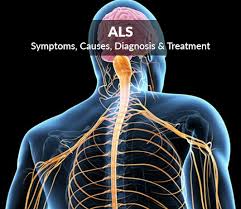Significance
Our results demonstrate that connexin 43 hemichannels are the conduits for amyotrophic lateral sclerosis (ALS) astrocyte-mediated motor neuron toxicity and disease spread, acting as a common mechanism that can target both familial ALS and sporadic ALS populations. Furthermore, our present work provides proof of principle that tonabersat, as a drug already studied in clinical trials for other indications, could serve as a potential ALS therapeutic.
Abstract
Connexin 43 (Cx43) gap junctions and hemichannels mediate astrocyte intercellular communication in the central nervous system under normal conditions and contribute to astrocyte-mediated neurotoxicity in amyotrophic lateral sclerosis (ALS). Here, we show that astrocyte-specific knockout of Cx43 in a mouse model of ALS slows disease progression both spatially and temporally, provides motor neuron (MN) protection, and improves survival. In addition, Cx43 expression is up-regulated in human postmortem tissue and cerebrospinal fluid from ALS patients. Using human induced pluripotent stem cell–derived astrocytes (hiPSC-A) from both familial and sporadic ALS, we establish that Cx43 is up-regulated and that Cx43-hemichannels are enriched at the astrocyte membrane. We also demonstrate that the pharmacological blockade of Cx43-hemichannels in ALS astrocytes using GAP 19, a mimetic peptide blocker, and tonabersat, a clinically tested small molecule, provides neuroprotection of hiPSC-MN and reduces ALS astrocyte-mediated neuronal hyperexcitability. Extending the in vitro application of tonabersat with chronic administration to SOD1G93A mice results in MN protection with a reduction in reactive astrocytosis and microgliosis. Taking these data together, our studies identify Cx43 hemichannels as conduits of astrocyte-mediated disease progression and a pharmacological target for disease-modifying ALS therapies.
Astrocytes form a highly coupled intercellular network in the central nervous system (CNS) through gap junctions (GJ) and hemichannels (HC) (1). GJ facilitate intercellular communication through the exchange of metabolites (2, 3), ions (4, 5), second messengers (6, 7), and microRNA (8). Each GJ is composed of two adjoining HC on the plasma membrane of adjacent cells and each HC is made of six connexin subunits arranged around a central pore (9). While connexins mostly form GJ, they can also exist as nonjunctional HC that open at the plasma membrane into the extracellular space. HC opening is dynamic and especially relevant as HC open upon cellular damage and under pathological conditions (10–12). Connexin 43 (Cx43) is the predominant connexin in astrocytes and the major contributor to astrocyte HC (11, 13–15). Some key roles of Cx43 include (16–19) homeostatic buffering, synchronization of astrocyte networks, metabolic support for neurons, and modulation of synaptic activity and plasticity.In amyotrophic lateral sclerosis (ALS), astrocytes carrying disease-specific mutations contribute to disease progression after onset and exacerbate motor neuron (MN) toxicity (20–22). ALS astrocyte-mediated neurotoxicity has also been demonstrated in vitro and in vivo using both murine (22, 23) and human ALS astrocytes (24–27). Recent studies suggest cytokines can infuence specific astrocyte profiles that render astrocytes to be proinflammatory causing toxicity across several neurodegenerative diseases (28).Altered Cx43 expression and function, including GJ coupling and HC activity, occurs in a number of neurological diseases (10, 11). In ALS, we have previously reported Cx43 is increased in the lumbar spinal cord of the ALS mouse model expressing mutant superoxide dismutase (SOD1G93A) (29), and demonstrated using an in vitro mouse model that blocking Cx43 in SOD1G93A astrocytes is neuroprotective.This work now addresses a central role for astrocytes in ALS, their involvement in disease progression, and whether Cx43 HC are a common mechanism contributing to MN death in both familial (FALS) and sporadic ALS (SALS) patients. To that end, we utilize an in vivo conditional Cx43 knockout (KO) mouse model to demonstrate that astrocyte Cx43 contributes to the temporal progression of disease. Using human brain and spinal cord tissues, as well as cerebrospinal fluid (CSF) from ALS patients, we demonstrate that Cx43 expression is enhanced in ALS and has some correlation with the rapidity of disease progression in tissues. Our fully humanized, spinal cord-specific platform of SALS and FALS human-induced pluripotent stem cell astrocyte (hiPSC-A) and MN (hiPSC-MN) cocultures enable us to investigate whether blocking Cx43 HC in hiPSC-A using a small molecule has functional relevance in providing neuroprotection to a broad ALS patient population. Finally, we translate these in vitro findings to in vivo treatment of SOD1G93A mice, demonstrating the potential of Cx43 HC blockade as a strategy for neuroprotection.
Results
….







